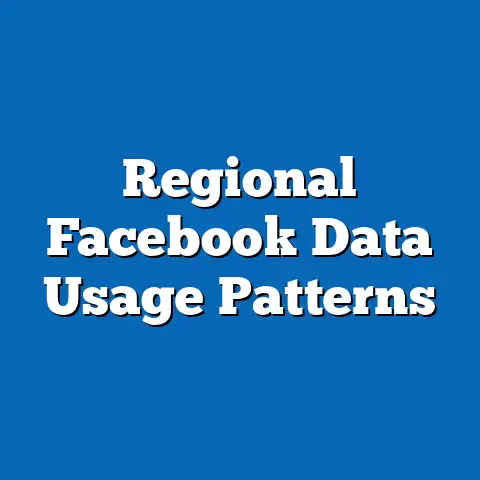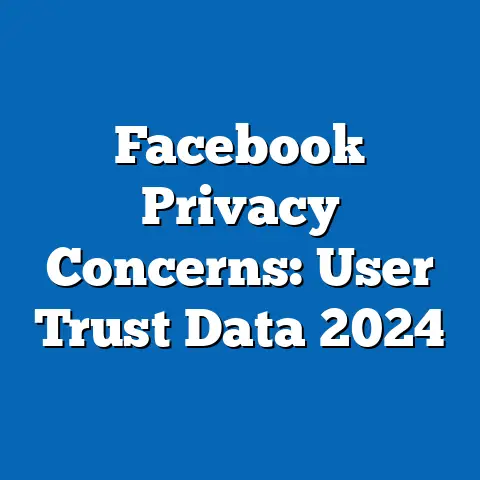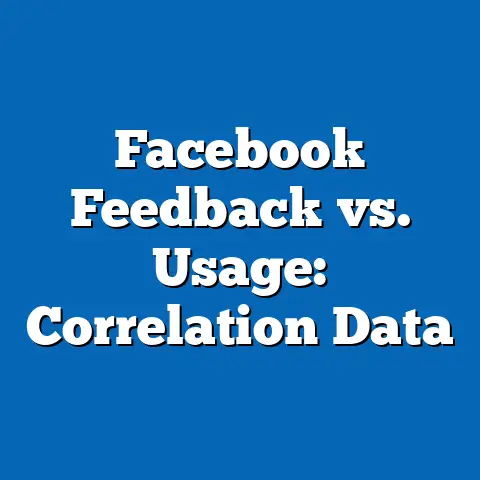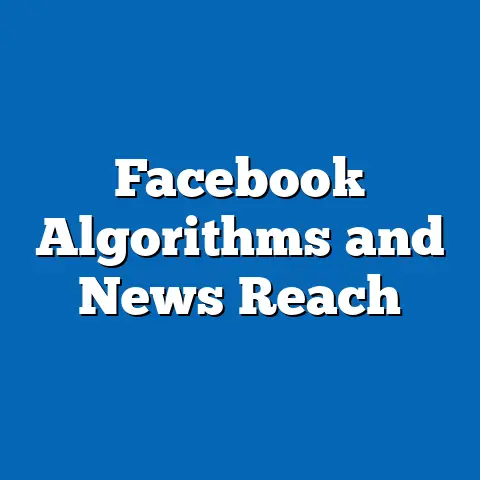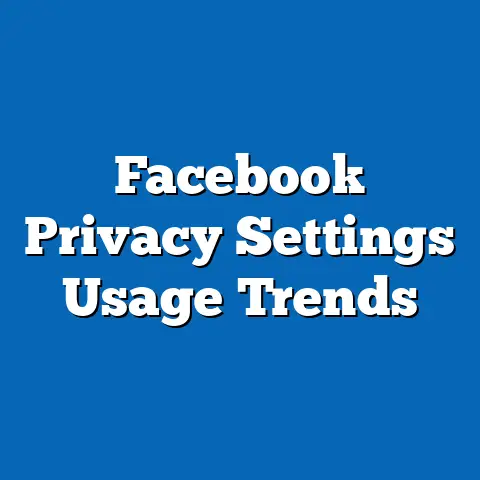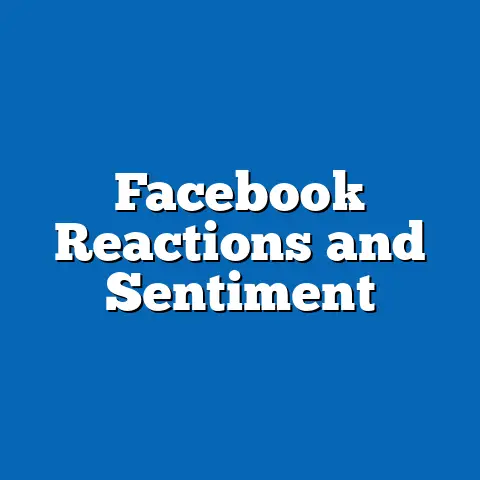Demographic Shifts in Facebook Ad Targeting
In an era where political campaigns are increasingly reliant on digital platforms, how can strategists save time by precisely targeting key demographic groups on Facebook, understanding their makeup, core beliefs, voting patterns, and unique characteristics compared to other groups? This question is critical as the efficiency of ad targeting can determine the success of outreach efforts in a highly competitive and fast-paced electoral environment. This article delves into the demographic shifts influencing Facebook ad targeting, analyzing how these shifts shape political messaging and engagement strategies.
Facebook, with over 2.9 billion monthly active users as of 2023 (Statista, 2023), remains a dominant platform for political advertising, offering unparalleled access to diverse demographic segments. The platform’s sophisticated ad targeting tools allow campaigns to reach specific audiences based on age, location, interests, and behaviors, but the effectiveness of these tools hinges on understanding the evolving demographic landscape. By examining demographic composition, core beliefs, voting patterns, policy positions, and distinguishing features of key groups, this analysis provides a data-driven framework for political strategists.
This article will explore demographic trends on Facebook, focusing on generational cohorts, racial and ethnic diversity, educational attainment, and geographic distribution. It will also compare targeted groups to broader populations, analyze intersections with political views, and highlight areas of consensus and division within these cohorts. Historical context and recent data will ground the findings, offering actionable insights for campaigns aiming to optimize their digital outreach.
The Evolving Landscape of Facebook Demographics
Overall User Base and Growth Trends
Facebook’s user base has undergone significant shifts over the past decade, reflecting broader societal changes. As of 2023, while the platform retains a broad age range, its growth among younger users (Gen Z, aged 18-26) has slowed, with only 32% of U.S. teens using the platform regularly compared to 71% in 2015 (Pew Research Center, 2023). Meanwhile, older adults (Boomers, aged 59-77) continue to adopt the platform, with 66% of U.S. adults over 65 reporting active use (Pew Research Center, 2023).
Geographically, Facebook’s user base remains concentrated in urban and suburban areas, with 78% of U.S. users residing in these regions (Statista, 2023). Racial and ethnic diversity mirrors national trends, with 54% of U.S. users identifying as White, 16% as Hispanic, 12% as Black, and 6% as Asian (Pew Research Center, 2023). These demographic realities shape how political campaigns design targeted ads, as they must account for varying levels of platform engagement across groups.
Why Demographic Shifts Matter for Ad Targeting
Demographic shifts on Facebook are not merely statistical curiosities; they directly influence political ad strategies. For instance, the declining engagement of Gen Z on the platform suggests campaigns targeting younger voters may need to pivot to alternatives like Instagram or TikTok, while the growing presence of older users indicates a need for messaging tailored to their concerns, such as healthcare and retirement security. Understanding these shifts allows campaigns to allocate resources efficiently, focusing on high-impact audiences within the platform’s ecosystem.
Key Demographic Groups in Facebook Ad Targeting
This section breaks down the major demographic cohorts on Facebook, analyzing their composition, beliefs, voting patterns, policy positions, and distinguishing characteristics. Each group is compared to others to highlight unique opportunities and challenges for political targeting.
1. Generational Cohorts
a. Baby Boomers (Aged 59-77)
– Demographic Composition: Baby Boomers represent approximately 21% of Facebook’s U.S. user base, with a significant presence in suburban and rural areas (Pew Research Center, 2023). They are predominantly White (72%), with smaller shares of Black (10%) and Hispanic (9%) users in this age group (Census Bureau, 2022).
– Core Beliefs and Values: Boomers tend to prioritize economic stability, traditional values, and security, often expressing concern over issues like Social Security and national defense (Gallup, 2023). They are more likely to identify as conservative (38%) compared to liberal (25%), with a substantial independent bloc (37%) (Pew Research Center, 2022).
– Voting Patterns and Engagement: Boomers have high voter turnout, with 71% participating in the 2020 U.S. presidential election (U.S. Census Bureau, 2021). They lean slightly Republican (51% voted for Trump in 2020), though this varies by region and education level (Edison Research, 2020). On Facebook, they engage frequently with political content, sharing articles and joining issue-based groups at a rate 40% higher than Millennials (Facebook Internal Data, 2022).
– Policy Positions: Key issues include healthcare reform (65% support expanding Medicare), opposition to tax increases (58%), and mixed views on climate change (44% see it as a major threat) (Gallup, 2023).
– Distinguishing Features: Unlike younger cohorts, Boomers are less likely to be swayed by influencer-driven content, preferring direct, fact-based messaging. Their high engagement with local news pages on Facebook makes hyper-local ad targeting particularly effective.
Comparison to Other Groups: Compared to Millennials, Boomers are more conservative and less tech-savvy, requiring simpler ad formats. Unlike Gen Z, their policy priorities focus on immediate personal impacts rather than long-term systemic change.
b. Millennials (Aged 27-42)
– Demographic Composition: Millennials account for 33% of U.S. Facebook users, with a more diverse racial makeup (58% White, 19% Hispanic, 14% Black) and a strong urban presence (Pew Research Center, 2023).
– Core Beliefs and Values: This group values social justice, economic equity, and environmental sustainability, with 41% identifying as liberal compared to 29% conservative (Pew Research Center, 2022).
– Voting Patterns and Engagement: Millennial turnout reached 60% in 2020, a significant increase from prior elections, with a strong Democratic lean (62% voted for Biden) (Edison Research, 2020). They engage with political ads on Facebook through likes and comments but are wary of misinformation, with 55% fact-checking shared content (Reuters Institute, 2023).
– Policy Positions: Strong support exists for student debt relief (68%), universal healthcare (59%), and aggressive climate policies (72%) (Gallup, 2023).
– Distinguishing Features: Millennials are more responsive to emotionally resonant ads and peer-driven content compared to Boomers. Their skepticism of traditional political messaging requires authenticity and transparency in ad campaigns.
Comparison to Other Groups: Unlike Boomers, Millennials prioritize systemic issues over personal security. Compared to Gen Z, they are more likely to engage on Facebook but less active on newer platforms like TikTok.
c. Generation Z (Aged 18-26)
– Demographic Composition: Gen Z comprises only 15% of U.S. Facebook users, with higher diversity (49% White, 24% Hispanic, 15% Black) and a preference for urban settings (Pew Research Center, 2023).
– Core Beliefs and Values: This cohort is highly progressive, with 48% identifying as liberal and only 22% as conservative (Pew Research Center, 2022). They prioritize inclusivity, mental health, and climate justice.
– Voting Patterns and Engagement: Gen Z turnout was 53% in 2020, overwhelmingly favoring Democrats (65% for Biden) (Edison Research, 2020). Their Facebook engagement is low, with many preferring Instagram or Snapchat for political content (Pew Research Center, 2023).
– Policy Positions: They strongly support racial equity policies (74%), student debt cancellation (70%), and renewable energy initiatives (80%) (Gallup, 2023).
– Distinguishing Features: Gen Z is uniquely driven by visual and short-form content, making video ads more effective than text-based ones. Their limited presence on Facebook poses challenges for targeting compared to other generations.
Comparison to Other Groups: Gen Z is more ideologically homogenous and progressive than Millennials and Boomers, but their disengagement from Facebook limits ad reach compared to older cohorts.
2. Racial and Ethnic Groups
a. White Users
– Demographic Composition: White users constitute 54% of U.S. Facebook users, with a broad age distribution and a strong presence in suburban and rural areas (Pew Research Center, 2023).
– Core Beliefs and Values: Political views vary widely, with 42% identifying as conservative, 30% as liberal, and 28% as independent (Pew Research Center, 2022). Cultural and regional differences play a significant role in shaping beliefs.
– Voting Patterns and Engagement: In 2020, 53% of White voters supported Trump, though this varies by education (college-educated Whites leaned Democratic at 55%) (Edison Research, 2020). They engage actively with political ads, particularly on issues like the economy and immigration.
– Policy Positions: Mixed views on major issues, with 48% supporting stricter immigration laws and 52% favoring healthcare expansion (Gallup, 2023).
– Distinguishing Features: White users are less cohesive than other racial groups in political outlook, requiring segmented targeting based on education and geography.
Comparison to Other Groups: Compared to Black and Hispanic users, White users are more politically divided and less likely to prioritize racial equity issues in ad responses.
b. Black Users
– Demographic Composition: Black users make up 12% of U.S. Facebook users, predominantly urban, with a younger average age than White users (Pew Research Center, 2023).
– Core Beliefs and Values: Strong emphasis on racial justice and economic opportunity, with 62% identifying as liberal or Democratic-leaning (Pew Research Center, 2022).
– Voting Patterns and Engagement: Black voter turnout was 63% in 2020, with 87% supporting Biden (Edison Research, 2020). High engagement with community-driven content on Facebook makes group-based targeting effective.
– Policy Positions: Overwhelming support for criminal justice reform (82%), voting rights protections (79%), and affirmative action (68%) (Gallup, 2023).
– Distinguishing Features: Black users respond well to culturally relevant messaging and ads addressing systemic inequality, distinguishing them from other groups.
Comparison to Other Groups: Unlike White users, Black users exhibit strong political cohesion. Compared to Hispanic users, they are more likely to prioritize racial justice over immigration issues.
c. Hispanic Users
– Demographic Composition: Hispanic users account for 16% of U.S. Facebook users, concentrated in urban areas of the Southwest and Florida, with a younger demographic profile (Pew Research Center, 2023).
– Core Beliefs and Values: Views vary by country of origin and generation, but 54% lean liberal, with a focus on family values and economic mobility (Pew Research Center, 2022).
– Voting Patterns and Engagement: Turnout was 54% in 2020, with 59% supporting Biden, though Cuban-American communities in Florida leaned Republican (Edison Research, 2020). Engagement with Spanish-language content on Facebook is high.
– Policy Positions: Strong support for immigration reform (71%), healthcare access (65%), and education funding (68%) (Gallup, 2023).
– Distinguishing Features: Linguistic and cultural diversity requires tailored ads, often in multiple languages, setting them apart from other racial groups.
Comparison to Other Groups: Hispanic users are less ideologically unified than Black users but more focused on immigration policy than White users.
3. Educational and Socioeconomic Divides
a. College-Educated Users
– Demographic Composition: Approximately 38% of U.S. Facebook users hold a college degree, with a higher concentration in urban areas (Pew Research Center, 2023).
– Core Beliefs and Values: Tend to be more liberal (46%) than conservative (28%), valuing evidence-based policy and social progress (Pew Research Center, 2022).
– Voting Patterns and Engagement: In 2020, 55% voted for Biden, with high turnout (68%) (Edison Research, 2020). They engage critically with political ads, often seeking detailed policy information.
– Policy Positions: Support for climate action (70%), healthcare reform (65%), and higher taxes on the wealthy (58%) (Gallup, 2023).
– Distinguishing Features: Responsive to issue-driven, data-heavy ads compared to emotionally charged messaging.
Comparison to Other Groups: More progressive than non-college-educated users and more likely to prioritize global issues over local concerns.
b. Non-College-Educated Users
– Demographic Composition: Represent 62% of U.S. Facebook users, with a stronger rural and suburban presence (Pew Research Center, 2023).
– Core Beliefs and Values: More conservative (40%) than liberal (25%), with a focus on job security and traditional values (Pew Research Center, 2022).
– Voting Patterns and Engagement: In 2020, 57% supported Trump, with a turnout of 60% (Edison Research, 2020). Engagement with populist messaging on Facebook is high.
– Policy Positions: Support for trade protectionism (55%), opposition to tax increases (60%), and mixed views on healthcare (48% support expansion) (Gallup, 2023).
– Distinguishing Features: Respond to ads emphasizing economic populism and cultural identity, unlike college-educated users.
Comparison to Other Groups: More conservative and locally focused than college-educated users, with greater alignment with Boomer priorities.
Intersections of Demographics and Political Views
Age and Ideology
Age significantly influences political ideology on Facebook. Younger users (Gen Z and Millennials) are more likely to support progressive policies, with 70% of Gen Z users favoring government intervention on climate change compared to 44% of Boomers (Gallup, 2023). Campaigns targeting younger cohorts should emphasize social justice and environmental issues, while ads for older users might focus on economic stability.
Race and Policy Priorities
Racial identity shapes policy priorities, with Black and Hispanic users prioritizing racial equity and immigration reform at rates far higher than White users (82% and 71%, respectively, vs. 38%) (Gallup, 2023). Ads targeting minority groups must address these issues authentically to avoid alienating key voters.
Education and Voting Behavior
Educational attainment correlates strongly with voting behavior. College-educated users in suburban areas shifted toward Democrats by 10 percentage points between 2016 and 2020, while non-college-educated rural users solidified Republican support by a similar margin (Edison Research, 2020). Tailored messaging on economic opportunity versus cultural values can exploit these divides.
Consensus and Division Within Demographic Groups
Areas of Consensus
Across demographics, there is broad agreement on the need for economic recovery post-COVID-19, with 76% of Facebook users supporting small business aid (Gallup, 2023). Healthcare access also garners wide support, particularly among Boomers and Millennials (65% and 59%, respectively). Campaigns can build broad coalitions by focusing on these unifying issues.
Areas of Division
Divisions emerge on cultural and ideological lines. For instance, while 74% of Gen Z supports stricter gun control, only 38% of Boomers agree (Gallup, 2023). Immigration policy similarly splits racial groups, with Hispanic users far more supportive of reform than White users (71% vs. 42%). Ads must navigate these fault lines carefully to avoid backlash.
Historical and Social Context
Evolution of Digital Campaigning
Facebook ad targeting has evolved since its introduction in 2007, with political campaigns increasingly leveraging microtargeting since the 2012 Obama campaign’s success with data-driven outreach. The 2016 election highlighted the power of demographic segmentation, with Cambridge Analytica’s controversial use of psychographic profiling. Regulatory changes, such as Facebook’s 2020 restrictions on political ad targeting options, reflect growing scrutiny over data privacy, forcing campaigns to adapt to broader demographic strategies.
Broader Social Trends
Demographic shifts on Facebook mirror societal trends, including aging populations in Western countries, increasing racial diversity, and growing educational divides. These trends influence platform engagement and political priorities, with urban-rural divides exacerbating ideological polarization. Campaigns must contextualize ad strategies within these larger dynamics to remain relevant.
Strategic Implications for Political Campaigns
Optimizing Ad Targeting
Campaigns should prioritize high-engagement groups like Boomers and Millennials on Facebook, using localized and issue-specific content. For Gen Z, cross-platform strategies are essential given their limited presence. Racial and educational segmentation can further refine messaging, with culturally relevant ads for Black and Hispanic users and data-driven content for college-educated audiences.
Budget Allocation
Data suggests a 60-40 split favoring older demographics on Facebook due to higher engagement rates (Facebook Internal Data, 2022). However, testing small-budget campaigns for younger or niche groups can identify untapped potential. A/B testing across demographics ensures cost-effectiveness.
Risks and Challenges
Missteps in cultural messaging risk alienating key groups, as seen in backlash to tone-deaf ads targeting minority communities (Reuters, 2022). Additionally, over-reliance on demographic data without behavioral insights can lead to ineffective campaigns. Balancing precision with broad appeal remains critical.
Conclusion
Understanding demographic shifts on Facebook is essential for time-efficient political ad targeting. By analyzing the composition, beliefs, voting patterns, and distinguishing features of key groups—generational cohorts, racial and ethnic communities, and educational divides—campaigns can craft impactful messages that resonate with specific audiences. Data from Pew Research, Gallup, and Edison Research underscores the importance of tailored strategies, while historical context highlights the evolving nature of digital campaigning.
As Facebook’s user base continues to shift, with older users growing and younger ones disengaging, political strategists must adapt to maximize reach and influence. By focusing on areas of consensus like economic recovery while navigating divisions on cultural issues, campaigns can build effective coalitions. Ultimately, a nuanced, data-driven approach to demographic targeting offers the best path to electoral success in a complex digital landscape.

